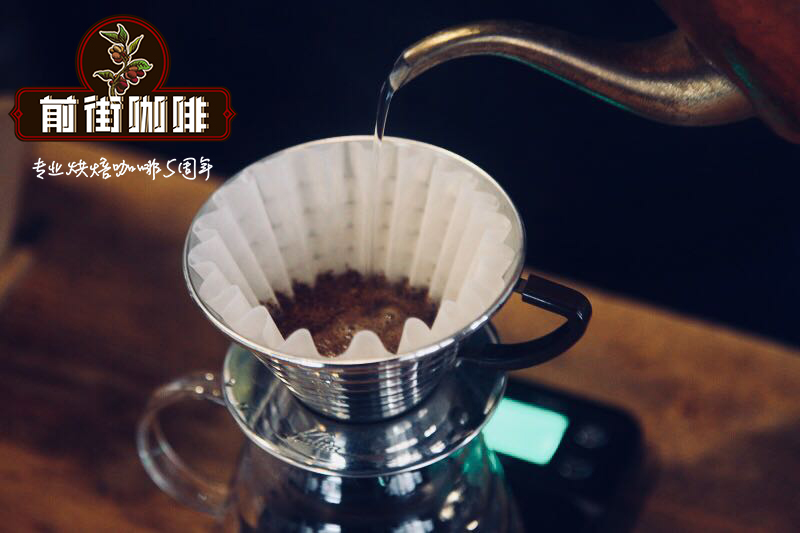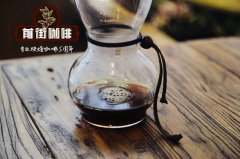Is Yejia Xuefei suitable for adding milk? how to choose the particle size of hand-made coffee?

Professional coffee knowledge exchange more coffee bean information please follow the coffee workshop (Wechat official account cafe_style)
Qianjie-brief introduction of red honey red cherry cooking in Yejia Xuefei
Light roasted coffee (Light?Roasting?Coffee) refers to the degree of roasting from the first explosion to the second explosion in the baking stage, that is, the roasting of cinnamon to the city.
The main purpose of shallow baking is to enjoy the variety of aromas contained in raw coffee beans. In other words, it reduces the aroma of coffee formed during deep roasting and highlights the characteristics of raw beans. So the key point of choosing shallow roasted coffee lies in the freshness of raw beans and the rich aroma of raw beans.
In the degree of shallow roasting, the "soil" of coffee itself is most likely to be expressed, and the bright and lively flavor of sour fruit is mostly the flavor that this degree of baking wants to present, coupled with "black" coffee extraction methods such as hand brewing, siphon, Philharmonic pressure, and so on. Generally shallow beans will be more light and refreshing flavor, and the flavor performance is very rich, flower fruit acid some tea flavor is the flavor performance of this kind of beans.
Just from the extraction principle, the shallow roasted beans have less cell expansion and weaker water absorption. When the water meets the cells, it takes more time to extract the desired substance. In the extraction, because the cell wall of the shallow roasted coffee is less damaged, the coffee cell tissue has not been fully expanded. And the capillaries that assist in the extraction of coffee have not been fully formed, so the sour taste is more prominent.
Today, Qianjie will take Yega Xuefei idido Red Honey Red Cherry as an example to share a brewing and cooking.
For red cherries treated with red honey, we will choose to use light baking to show its floral and fruity aromas and citrus acidity. In the cup test, we measured the flavor of jasmine, citrus, honey, berries and almonds. On the whole, this bean is partial to flavor, so it is recommended to add other things. As long as you taste the original flavor, it will be delicious.
The water temperature is 91 °in cooking.
The water temperature of coffee extraction is related to the degree of roasting, and the shallow roasted beans will be rich in anthuric acid. If the water temperature is too low, there will be uncomfortable acidity and dryness in the taste, but if the water temperature is too high, there will be a very bitter taste, masking the flavor of the fruit acid.
Powder to water ratio at 1:15
If the ratio of powder to water is too high, there will be a sense of water in the taste, thin and clean; on the other hand, if the ratio of powder to water is too small, the style will be very rich and bitter.
Degree of grinding: medium and fine grinding
The grinding degree of normal hand-brewed coffee should be relatively uniform, and the uniform grinding degree can avoid the disunity of coffee extraction and make the solubility of coffee flavor reach a relatively saturated state.
Flushing and cooking technique: segmented extraction. Steam with 30 grams of water for 40 seconds (because the beans are relatively fresh, the gas is exuberant, and the steaming time is slightly prolonged) small water flows are injected around the circle to 125 grams for stages, and when the water level is about to expose the powder bed, continue to inject water to 228 grams to stop injection, wait for the water level to drop and remove the filter cup when the powder bed is about to be exposed, (the time of steaming starts) the extraction time is 2 grams 39ter05 ".
Flavor: berries, strawberries, honey
Knowledge expansion: the vast majority of coffee drinks are water. We should understand the relationship between water and substances with special flavor in coffee beans. The extraction of flavor substances requires a comprehensive consideration of solution (water), solvent (coffee), temperature, and other variables and factors in the process of brewing coffee.
END
Important Notice :
前街咖啡 FrontStreet Coffee has moved to new addredd:
FrontStreet Coffee Address: 315,Donghua East Road,GuangZhou
Tel:020 38364473
- Prev

Ye Jia Xuefei Coffee Bean hand-brewing method to share the Standard reference of Grinding thickness of hand-made Coffee Powder
Professional coffee knowledge exchange more coffee bean information please follow the coffee workshop (Wechat official account cafe_style) front street-Yega Fitado Coffee, hand-brewed Coffee A brief introduction to the grinding thickness of Yega Xuefei (Yirgacheffe) in the Gedeo region of southern Ethiopia
- Next

Description of Coffee Flavor in Narano producing area of Costa Rica introduction of Costa Rican Narano coffee beans
Professional coffee knowledge exchange more coffee bean information please follow the coffee workshop (Wechat official account cafe_style) COSTA RICA NARANJO bright citrus flavor with grapefruit and lemon flavor and sweet with cream chocolate. Geography: Naranjo, Costa Rica 50 years ago, a group of small coffee farmers set up a cooperative in Narancho, Costa Rica.
Related
- Beginners will see the "Coffee pull flower" guide!
- What is the difference between ice blog purified milk and ordinary milk coffee?
- Why is the Philippines the largest producer of crops in Liberia?
- For coffee extraction, should the fine powder be retained?
- How does extracted espresso fill pressed powder? How much strength does it take to press the powder?
- How to make jasmine cold extract coffee? Is the jasmine + latte good?
- Will this little toy really make the coffee taste better? How does Lily Drip affect coffee extraction?
- Will the action of slapping the filter cup also affect coffee extraction?
- What's the difference between powder-to-water ratio and powder-to-liquid ratio?
- What is the Ethiopian local species? What does it have to do with Heirloom native species?

